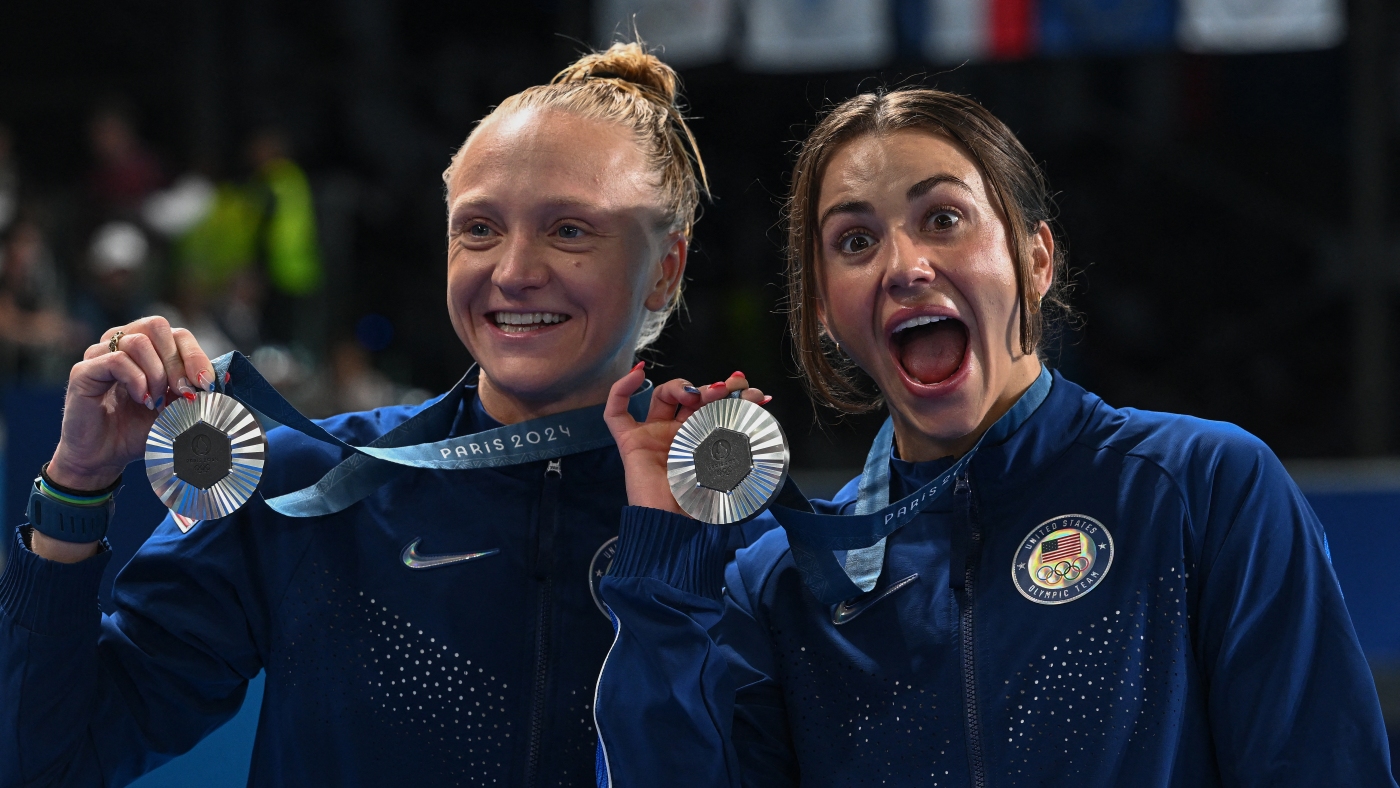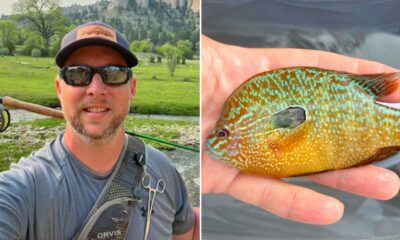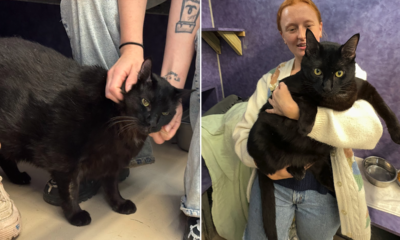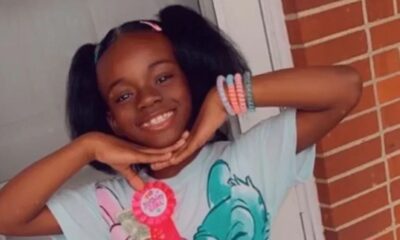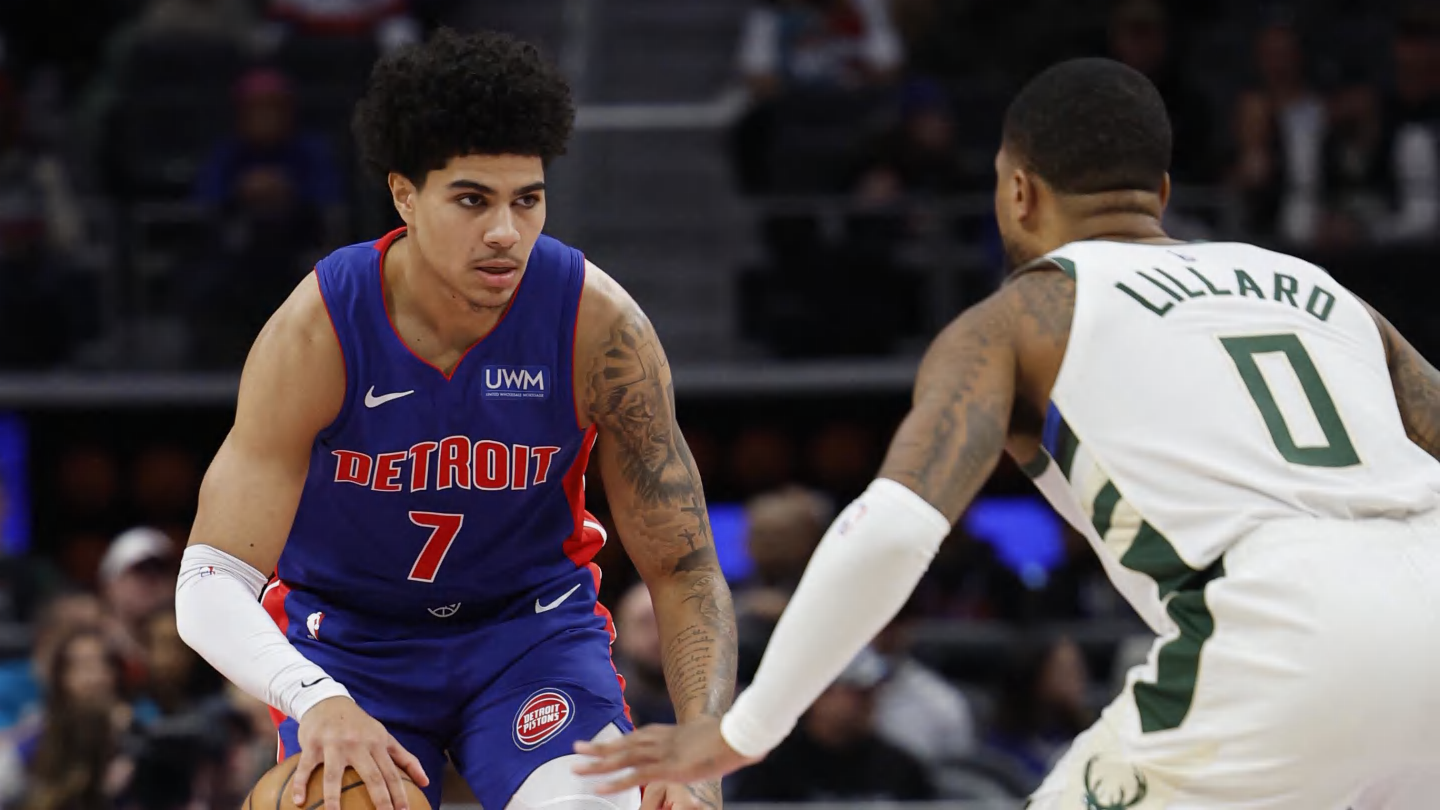Lifestyle
For L.A. rapper Jay 305, smelling good is sanctity and Scent Bar is the church
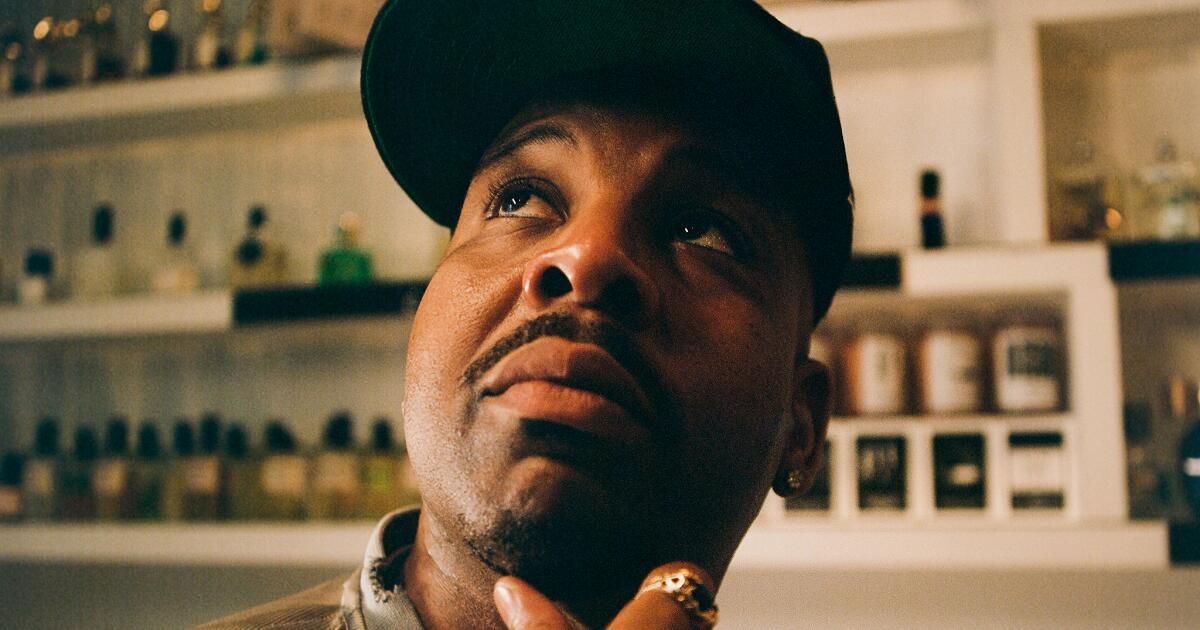
For Jay 305, smelling good is sanctity. A trail of musks, resinous woods and creamy florals follow him around like an orb of protection. But the real flex, the never-ending quest, is to smell unlike anyone else. At Scent Bar DTLA, the niche perfume boutique with locations at The Row, Hollywood and New York City, the South-Central rapper is picking up perfumes and putting them to his nose in short progression, leaving a collection of bulbous and angular bottles in his wake. He is looking for something that stimulates him almost reflexively, the way a fragrance that’s truly meant for you will. Jay came in with a list of possible contenders written on his Notes app, which he does often: Parfum de Marly’s Layton, Initio Parfums Privés’ Oud for Greatness, Nasomatto’s Black Afgano. Beast-mode fragrances with an air of mystery, or spirituality. The kind of perfumes that make an introduction for you. “Scent, it’s like your brand,” Jay says.
Jay has come here at least once a week for the last few years. Always to the DTLA location, usually after going to Smorgasburg L.A. He’s also a regular at Frédéric Malle on Melrose Place where he stocks up on one of his favorites, Carnal Flower. At Dawah Bookshop in Leimert Park, he blends his own perfume oils, and at Dover Street Market, where everyone knows him by name, he’s most recently been drawn to the Edward Bess perfume collection. At Scent Bar, we’re jumping from the “incense” shelf, to the “cult masculine” shelf, smelling everything David Aguirre, an artist who’s been working at Scent Bar for years and is often Jay’s point person, skillfully pulls from the “oud” or “floral” shelves behind the counter. Aguirre has taught Jay the correct pronunciation of many French perfume names and has put him on to all-time favorites, like Jeroboam’s Oriento, a jammy rose patchouli with a sparkling saffron top note.
“Scent, it’s like your brand,” Jay says.
Born Jay Cummins, he’s grown accustomed to his personal interests defying the expectations people have of him based on where he grew up, his time spent behind bars or the experiences he raps about in his music. Jay’s discography has become the stuff of L.A. legend — hood anthems, strip club classics. It was 2012’s “Youzza Flip” that put him on the map, which was only further cemented by his work on Dom Kennedy’s label Other People’s Money, a.k.a. OPM, throughout the 2010s. He’s been making music since — finding hits with tracks like “Why You So Nasty?” featuring Travis Scott off his 2017 album, “Taking All Bets.” But he’s also a certified perfume addict, has been vegan for 10 years, is sober and has lived life in full dedication to health and wellness after getting into a car wreck in his early 20s, and a doctor telling him that if he didn’t lose weight his knees wouldn’t heal. He’s a Virgo, and reminds me often of the sign’s superiority. He dabbles in dirtbikes in a quest toward finding freedom, which is how we first met. And he’s a fashion enthusiast, which is something he’s felt fully free to express in recent years through a personal style he’s dubbed “ghetto couture.”
Today, he’s wearing mostly New Bedstuy, a brand designed by his friend Johnnie Davis that’s known for making subversive staples, and Margiela. Sitting courtside at a Lakers game recently, Wiz Khalifa dubbed Jay “the best dressed in the West,” he says, proudly. He’s also a kind of unofficial mayor of L.A. — with friends spanning the music, art and fashion worlds in the city, casually name-dropping everyone from Kendrick Lamar and Rita Ora in the same breath. Almost a year ago, I ran into Jay at a TOMBOGO film screening for L.A. Fashion Week. His scent hit me immediately, and I asked the question compulsively: “What are you wearing?” Jay knew I wasn’t talking about his vest, his shoes, or his hat. He looked at me, twinkle in his eye, smirk forming: “I have my own mix. I can’t tell you what.” We immediately agreed that we should go to Scent Bar, our mutual happy place. (And for the record, I guessed at least one perfume in this mysterious mix off first whiff alone, which is when Jay knew I was a real one.)

Jay’s latest EP, called “Don’t Wait Until I Die,” made in collaboration with rapper and producer Hit-Boy, takes a page from the deep, oily, enveloping scents that have become his signature.
Jay’s latest EP, called “Don’t Wait Until I Die,” made in collaboration with rapper and producer Hit-Boy, takes a page from the deep, oily, enveloping scents that have become his signature. The record, which dropped in May, is complex, dealing with themes of legacy and mortality. “Pieces,” a kind of summer banger made with Dom Kennedy and Hit-Boy, serves as the flipside to “Devils Happy In LA,” a demon mode record that unveils the city’s dark side. In “Pray 2 God Is Real,” Jay raps about pleading to a higher power for safety, for understanding, for his people. He’s been wearing ouds as part of his creative process when making the EP, one of the most expensive — and divisive — notes in perfumery known as “wood of the gods.” “It has a darker tone to it, but it’s still spiritual, it’s still healing, which is what ‘Don’t Wait Until I Die’ is,” he says. “Don’t wait until I’m gone to remember my scent.”
Fragrance people are a different breed — obsessive little freaks who are driven by their senses and fall in love with things that are invisible. The real heads can chop it up for hours about the construction of a perfume, the feelings and ideas that it can provoke. We’ve reached the point in our Scent Bar journey where Jay and I are talking a mile a minute, eyes rolling in the back of our heads every time we smell something special, darting from corner to corner. Nothing makes sense and everything is beautiful — flying high on the ecstasy of perfume.
I came in with the intention of buying something, and I have Jay smell the perfume I’ve been considering for the last six months five times in a row (indoors and outdoors) because I am actually insane. And he must be too because he doesn’t once refuse or second-guess me. It’s called Ma Nishtana by Parfum Prissana, with notes of frankincense, labdanum, saffron, rose, smoke and leather. It’s the kind of fragrance that’s so animalic and intense at first smell that it makes you gag, with a dry down that becomes strangely addicting, comforting and warm. There is an understanding between Jay and I that this is what one must do — talk about, think about, and smell perfume incessantly to understand it, and find something that is either in reflection of the person you are or the person you want to become.
Scent Bar is the kind of place where, if you love perfume, feels almost illegal to be inside of. There is so much at your disposal, so many things you’ve never smelled and too many things you want to smell forever. Jay will often come here on a date to flex his knowledge — “It’s what you taught her, not what you bought her,” goes one of his many mantras — to get a sense if a potential partner is going to be repelled by the smells he likes. “If she’s a good person, that’s how you find out,” he says. How so? “Because that’s when you find out if she’s with the dark side or she’s with the light side. If she comes in here and [can’t stand] the smell, something’s wrong.” For Jay, scent is directly rooted in spirituality, love of self and respect for others.
“It brings out emotions,” Jay says of fragrance. “Scent and taste are the biggest things you remember from being a kid.” Growing up in a Black Caribbean household in the ‘80s and ‘90s — his mom is from Jamaica, his dad is from Barbados — smelling good was law. “If you have an outfit on, but you don’t have cologne on or you don’t smell good, do you even have the flyest fit on? What’s the point,” he says. It was after his grandmother told him he was musty in front of a girl he liked when he was 9 years old that Jay vowed to never be caught slipping again. His first fragrance was Davidoff’s Cool Water — a cult classic masculine marine fragrance with notes of rosemary, sea water and ambergris. (The perfumer behind the fragrance is Pierre Bourdon, who would go on to make fragrances for one of Jay’s favorite houses, Frédéric Malle, including French Lover and Iris Poudre.) His journey jumped to Nautica Blue, then Versace Dylan Blue. (Every popular “men’s” fragrance in the ‘90s was named after the color blue, apparently.) He eventually started dabbling in Le Labo, and then Byredo, which opened him up to the niche perfume world.
Perfume is baked into Jay’s ritual every morning. A daily baptism that comes after a workout and a shower. His spray points include behind his knees, his lower back, his shoulders and his beard “depending.” On what, I ask? He laughs, and doesn’t fully answer.
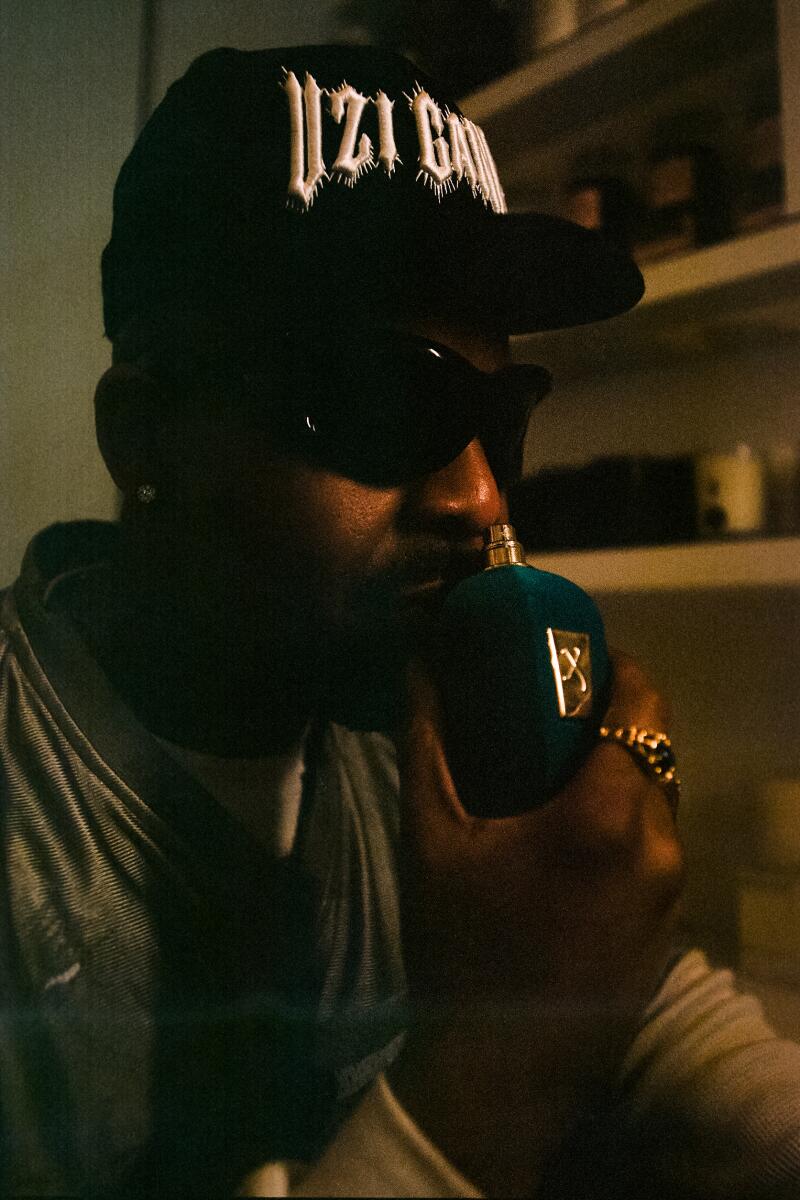
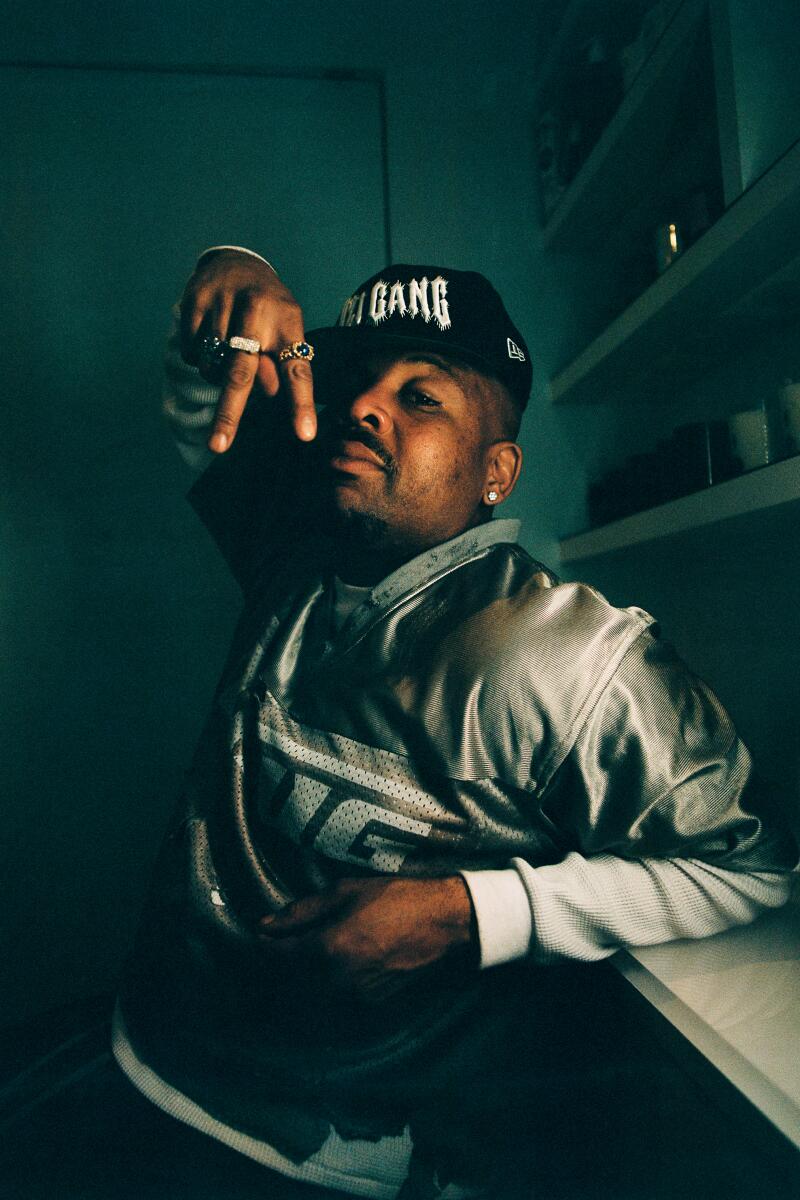
“Scent and taste are the biggest things you remember from being a kid.”
— Jay 305
We take a walk around The Row to place a to-go order at Pizzeria Bianco while we huff the blotters doused with our potential perfume picks. Jay and I have similar tastes in scent — we want to smell moody, mystical, like we just stumbled out of a temple and know something you don’t, with a touch of zesty punchiness or weirdness. We gravitate toward scents that are polarizing. “There’s going to be something for everybody,” he says. “It’s like making music, like making art. Some people aren’t gonna get it right then and there, but one day, it might just hit them.”
He’s encouraging me to just get Ma Nishtana — probably because I won’t shut up about it, and maybe because both of our nostrils are lowkey charred at this point. When we walk back into Scent Bar, I bolt toward the counter where I left the Ma Nishtana bottle, and next to it I notice a simple, cylindrical bottle of a perfume I’d never seen, or heard of, called Papyrus Oud by Parle Moi de Parfum. Something urges me to open the magnetic cap and the moment I inhale the smell of the faintly golden liquid, I feel my eyes well up a little bit. I know. I know in that immediate way you know when a perfume is right for you. It smells, to me, like burnt paper, Smarties candies and leather. The notes range from ginger to orris root, white cedar and vetiver. This perfume gets me, this perfume is me. No question. I have Jay smell it and buy it immediately.
Jay asks for samples of Orto Parisi’s Terroni, a delicious, damp, smoky, wet earth and raspberry fragrance, and Naomi Goodsir’s Bois d’Ascese, a perfume that smells like drinking whiskey neat around a bonfire. He vows to come buy one of them in celebration when “Don’t Wait Until I Die” comes out.
As I sit in the car, the smell of Papyrus Oud filling space, I feel so full — maybe it’s from the dopamine hit of just spending $150, but mostly, I think, from finding a fragrance that feels like a self-portrait. I remember something that Jay said to me earlier in the day about perfume: “It’s like the Earth,” he says. “The Earth only gives.” It’s at that moment I realize that I accidentally walked away with the samples Jay got for himself. Good thing he’ll be back next week.

Lifestyle
40 years after 'Purple Rain,' Prince’s band remembers how the movie came together

Prince on the custom motorcycle featured in Purple Rain.
Cinematic/Alamy
hide caption
toggle caption
Cinematic/Alamy
Wendy Melvoin, guitarist for Prince’s genre bending band The Revolution, remembers one of their most iconic songs started with an idea — and a challenge — from the boss himself.
Prince broached the topic during a band rehearsal. “He came to the table with this beautiful idea … most of the songs [on the album] had already been done,” says Melvoin, “He said ‘I have this idea and sounds a little like this…whattaya you guys got?’”
What Wendy had was an idea for a mournful cascade of guitar chords that proved the perfect starting point.
“I came up with that intro and that chord progression to get us into the song,” she adds. “And it ended up being one of the most iconic intros to a pop ballad ever.”
The song Purple Rain would become the surprising, anthemic climax for a film of the same name that emerged as one of the most successful and influential musical films in history. The movie hit theaters 40 years ago, breaking barriers in the music world while signaling the ascendancy of Prince as a pop music superstar.
Putting Purple Rain on the silver screen
Filmed around the band’s Minneapolis hometown, Purple Rain had a simple story. Prince’s character — known only as The Kid – is rocked by his dad constantly beating his mother at home, struggling to connect with his bandmembers and a new romantic interest, a beautiful singer named Apollonia.
Drummer Bobby Rivkin, known onstage as Bobby Z, says the idea of showcasing Prince’s songs and The Revolution in a film was inspired by the success of MTV and its focus on music videos.
“Prince was always someone who took a step bigger than the cultural [stuff] that was happening at the times,” he adds. “Once MTV started playing his videos, I think he just gravitated to something bigger and said ‘I’ll just take it to the next level.’’”
Melvoin says she and The Revolution — including Rivkin, keyboardists Lisa Coleman and Matt Fink and bassist Brown Mark — found out they would be working on a movie when Prince announced it in a matter-of-fact way at a rehearsal. But she wasn’t worried about whether she could act or how the band would look onscreen.
“I guess if I had any concern back then, it was just literally, ‘was the story going to be any good?’” she says, laughing. “I didn’t have any doubt the music sequences would be fantastic. But I didn’t have a good sense of whether the narrative of the film was going to work.”

Turns out, it all worked pretty well. Purple Rain was a hit, with the film and its soundtrack earning an Oscar, two Grammy awards and status as a groundbreaking musical film.
It also introduced a film audience to Prince’s scorching performance style, his unerring ability to craft hit tunes, and his distinctive fashion sense. Prince’s network of bands and performers also got some attention – including the girl-fronted group Apollonia 6 and the funk band The Time.
The Time lead singer Morris Day and his onstage foil Jerome Benton became the film’s comic center, with the two riffing on a version of Abbott and Costello’s classic routine “Who’s on First?”.
“Honestly, we weren’t trying to be funny … we always clowned around at the time because we were young,” Day says, responding to questions via email. He noted, even though the cast took acting and dance classes in preparation for filming, “we were just being ourselves. If anything, I was more conscious of being cool than funny.”

Morris Day of The Time performs in Chicago in 1983, before Purple Rain came out.
Raymond Boyd/Getty Images
hide caption
toggle caption
Raymond Boyd/Getty Images
He’s not surprised people are still talking about the film four decades after its initial release.
“The film was groundbreaking on so many levels … it was the first of its kind,” adds Day, who says he’s only watched the film in its entirety one time, at its Hollywood premiere on July 26, 1984. “It somehow reminds people of a special period in their lives during the ‘80s, which is a period we all at times wish we could reclaim.”
Building the drama in Purple Rain
Fans know the film tells a more combative story behind the genesis of the song Purple Rain.
Onscreen, Melvoin and her then-girlfriend, keyboardist Lisa Coleman write the song, fighting a reluctant Prince – known only as The Kid in the movie – to let The Revolution play it onstage.

“Everytime we give you a song, you say you’re going to use it, but you never do,” Melvoin shouts at Prince during the scene, delivering some of the best acting from the musicians who mostly fill out the cast. “You think we’re doing something behind your back…you’re just being paranoid as usual.”
When Prince finally agrees to play Purple Rain onstage at the Minneapolis club First Avenue – launching into an emotional rendition topped by one of the best guitar solos in pop music – he wows the crowd and saves the band. But Melvoin says now that the friction they acted out was “movie magic” conjured to build a story; in real life, she, Lisa and Prince were very close collaborators.

Prince, alongside Wendy Melvoin (left) and Lisa Coleman (right) accepts Purple Rain‘s Oscar for best original score in 1985.
HARMS/AFP via Getty
hide caption
toggle caption
HARMS/AFP via Getty
Powered by hits like the title track and the percolating dance jam I Would Die 4 U, Purple Rain burst like a lavender-tinged explosion across the pop culture landscape – launching Prince’s growing fame into the stratosphere.
The innovative dance hit When Doves Cry, recorded by Prince with no bass guitar, became his first Number One single on Billboard’s Hot 100 singles list. That was followed by his second Number One single, the rock and soul classic Let’s Go Crazy, which showcased his guitar skills at a time when rock guitar wasn’t heard often on R&B records.
Giving fans a peek behind the mystique
Prince had developed a mystique by rarely talking to the press. So, in the days before YouTube and Tik Tok, Purple Rain offered a sustained – if fictionalized – look at the inner workings of the band and his origin story for fans eager to know more.


And it centered a group of performers who were a mix of identities and ethnicities in the Midwest, making music that crossed all kinds of cultural barriers, at a time when people like that were rarely seen on the silver screen.
“That film was Prince’s version of social media,” Melvoin says. “This is funk rock and nobody’s seen a movie based on this kind of life. It [was] a trip for people to see.”
But there were also criticisms. Many of the film’s performers were amateurs, which showed in their performances. And female characters were often treated badly on screen: in one scene, Jerome Benton gets rid of a hostile woman confronting Day by tossing her into a dumpster.
“Given today’s culture, I’m certain there are moments in the film that ruffle a few feathers,” Day says. “Overall, I would like to think we did something great. And based on the overwhelming majority [of public reaction], I believe we did.”
The film ultimately proved the perfect showcase for Prince’s expansive creativity – from his ruffled shirts and big shouldered clothes to his mix of religion and sexuality in lyrics, innovative ways of recording and his seemingly endless supply of high-quality songs.

Bobby Rivkin, otherwise known as Bobby Z, during a recording session in 1989.
Jim Steinfeldt/Michael Ochs Archives/Getty Images
hide caption
toggle caption
Jim Steinfeldt/Michael Ochs Archives/Getty Images
“MTV opened the door a little bit — just a teeny crack of light — and he would kick it open,” Rivkin adds. “He was innovative in fashion and culture. And it was a remarkable time for him. From humble beginnings to control [of] black culture, crossover culture … rock, funk, pop … He was on fire for quite a while.”
Continuing on without the boss
A couple of years and albums later, Prince disbanded The Revolution. But the group has reunited a few times – notably for a benefit concert after Rivkin had his first heart attack in 2010 – and after Prince died in 2016, at age 57 from an accidental fentanyl overdose. More recently, the group came together last month to perform during a five-day event in Minneapolis celebrating Purple Rain’s 40th anniversary.
Both Melvoin and Rivkin say they hope The Revolution can play more shows commemorating Purple Rain’s anniversary over the next year. But they also admit it can be challenging performing without their dynamic leader and frontman, even as playing together helps them process the loss.
“After he passed, it’s the only thing that we could think of to do — to be together and grieve,” Melvoin says.
And what would The Kid himself think about the legacy of his blockbuster film and album? Day says he’s not sure.
“[Prince] never liked staying in the past,” the singer adds. “He was always evolving. Once Purple Rain was done, he was on to the next. But now that I’m thinking about it, he might have thrown a big celebration at Paisley Park for the fans. Probably would have been one hell of a jam session.”
Lifestyle
Josh Flagg Says Ben Affleck Might Be In Escrow For New Home In Brentwood

TMZ.com
Josh Flagg says Ben Affleck might actually be putting down roots in Brentwood as opposed to it being a pit stop … telling us he’s heard the guy might be quietly buying a pad there.
We got the ‘Million Dollar Listing’ star at the Plaza Hotel in New York City — and our photog asked him about Ben and Jennifer Lopez publicly listing their Beverly Hills mansion for $68 million … and what the implications for that might be big picture.

Remember … Ben and Jen only just bought the place in 2023, and Josh says the quick flip here makes it look like they are getting divorced … something we’ve been reporting is going to happen for a while now.
We broke the story … Ben and J Lo were quietly trying to sell the estate off-market — but it clearly didn’t work out, and now they’ve going public with the house sale.
TMZ.com
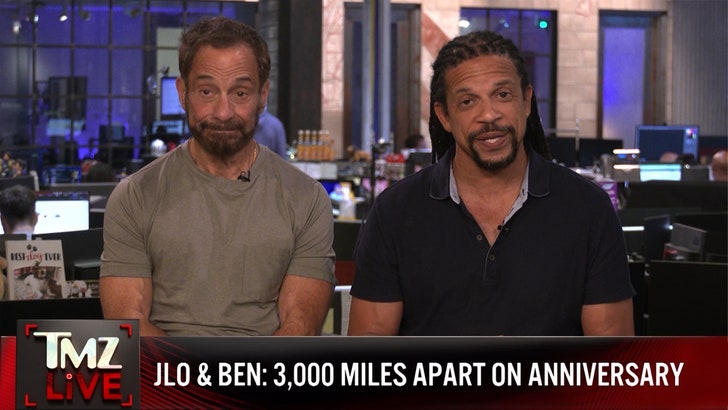
As you know … Ben’s been staying in a Brentwood rental since moving out of the marital Bev Hills mansion, and J Lo’s been spending a lot of time on her own too … first in Europe, and then more recently in New York to celebrate her birthday week.

TMZ Studios
But, get this … Josh says he recently heard Ben was quietly in escrow on something in Brentwood … so BA may not be renting anymore after all — at least that’s what JF’s floating.
As for the Bev Hills mansion — which Ben and Jen paid over $60 million for — Josh explains why Bennifer might not be taking a huge financial hit … although, they definitely ain’t gonna be turning a profit either.
Interesting stuff all around … especially that tidbit about Ben, if it turns out to be right.
Lifestyle
'Wait Wait' for July 27, 2024: With Not My Job guest Kathleen Hanna

Kathleen Hanna of The Julie Ruin performs onstage at the 2016 Panorama NYC Festival – Day 2 at Randall’s Island on July 23, 2016 in New York City. (Photo by Nicholas Hunt/Getty Images)
Nicholas Hunt/Getty Images/Getty Images North America
hide caption
toggle caption
Nicholas Hunt/Getty Images/Getty Images North America
This week’s show was recorded in Chicago with host Peter Sagal, judge and scorekeeper Bill Kurtis, Not My Job guest Kathleen Hanna and panelists Meredith Scardino, Peter Grosz, and Mo Rocca Click the audio link above to hear the whole show.
Who’s Bill This Time
Momala Takes Over; Assigned Seats Are Back; And The Heat Is On
The Olympic Torch Reporch
Our Summer Olympics Preview
Bluff The Listener
Our panelists tell three stories about someone committing an office faux pas, only one of which is true.
Not My Job: We quiz Bikini Kill’s Kathleen Hanna on Hanna-Barbera
Punk icon Kathleen Hanna plays our game called, “Kathleen Hanna Meet Hannah-Barbera.” Three questions about the animation studio.
Panel Questions
Hide Your Receipts; VR Meets ER; Avocado Apologies
Limericks
Bill Kurtis reads three news-related limericks: Situation Room Cocktails; Burrito Bird; Hopped Up Sharks
Lightning Fill In The Blank
All the news we couldn’t fit anywhere else
Predictions
Our panelists predict what will be the big story out of the Paris Olympic Games
-

 World1 week ago
World1 week agoOne dead after car crashes into restaurant in Paris
-

 Midwest1 week ago
Midwest1 week agoMichigan rep posts video response to Stephen Colbert's joke about his RNC speech: 'Touché'
-

 News1 week ago
News1 week agoVideo: Young Republicans on Why Their Party Isn’t Reaching Gen Z (And What They Can Do About It)
-

 Movie Reviews1 week ago
Movie Reviews1 week agoMovie Review: A new generation drives into the storm in rousing ‘Twisters’
-

 Politics1 week ago
Politics1 week agoFox News Politics: The Call is Coming from Inside the House
-

 News1 week ago
News1 week agoVideo: J.D. Vance Accepts Vice-Presidential Nomination
-

 World1 week ago
World1 week agoTrump to take RNC stage for first speech since assassination attempt
-

 News1 week ago
News1 week agoRNC speakers want to separate the president from the person to show softer side of Trump
